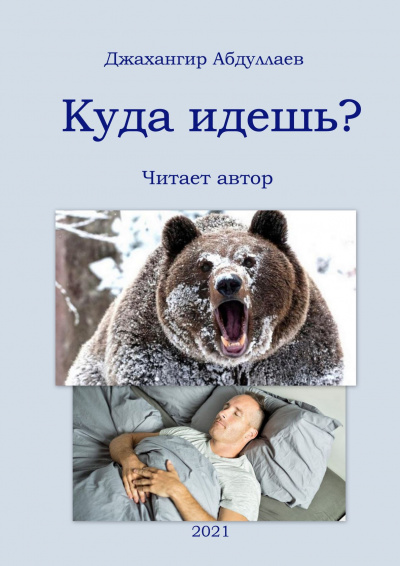Читать книгу "Memento mori. История человеческих достижений в борьбе с неизбежным - Эндрю Дойг"
Шрифт:
Интервал:
Закладка:
86
W. Naphy and A. Spicer. The Black Death. A History of Plagues 1345–1730. Tempus Publishing: Stroud, UK, 2000.
87
G. D. Sussman. Was the black death in India and China? // Bulletin of the History of Medicine, 85, 2011. P. 319–355.
88
L. Wade. Did Black Death strike sub-Saharan Africa? // Science, 363, 2019, P. 1022.
89
M. Wheelis. Biological warfare at the 1346 Siege of Caffa // Emerging Infectious Diseases, 8, 2002. P. 971–975.
90
Ibid.
91
R. Horrox. The Black Death. Manchester University Press, 1994. P. 14–26.
92
L. H. Nelson. The Great Famine (1315–1317) and the Black Death (1346–1351), 2017. URL: http://www.vlib.us/medieval/lectures/black_death.html.
93
O. J. Benedictow. The Black Death: The Greatest Catastrophe Ever // History Today, 55, 2005.
94
P. Daileader. The Late Middle Ages. The Teaching Company, 2007.
95
S. Cohn. Patterns of Plague in Late Medieval and Early-Modern Europe // The Routledge History of Disease. Routledge: Abingdon, UK and New York, 2017. P. 165–182.
96
W. Jewell. Historical Sketches of Quarantine. T. K. and P. G. Collins: Philadelphia, 1857.
97
S. M. Stuard. A State of Deference: Ragusa/Dubrovnik in the Medieval Centuries. Philadelphia: University of Pennsylvania Press, 1992.
98
P. A. Mackowiak and P. S. Sehdev. The Origin of Quarantine // Clinical Infectious Diseases, 35, 2002. P. 1071, 1072.
99
K. I. Bos et al. Eighteenth century Yersinia pestis genomes reveal the long-term persistence of an historical plague focus // Elife, 5, 2016.
100
C. A. Devaux. Small oversights that led to the Great Plague of Marseille (1720–1723): Lessons from the past // Infection Genetics and Evolution, 14, 2013. P. 169–185.
101
W. Naphy and A. Spicer. The Black Death. A History of Plagues 1345–1730. Tempus Publishing: Stroud, UK, 2000.
102
D. J. Grimes. Koch’s Postulates — Then and Now // Microbe, 1, 2006. P. 223–228.
103
E. Marriott. Plague. Metropolitan Books/Henry Holt & Co: New York, 2003.
104
M. Simond et al. Paul-Louis Simond and his discovery of plague transmission by rat fleas: a centenary // Journal of the Royal Society of Medicine, 91, 1998. P. 101–104.
105
D. Wootton. Bad Medicine: Doctors Doing Harm Since Hippocrates. Oxford University Press, 2007. P. 127.
106
C. Demeure et al. Yersinia pestis and plague: an updated view on evolution, virulence determinants, immune subversion, vaccination and diagnostics // Microbes and Infection, 21, 2019. P. 202–212.
107
G. Alfani and C. Ó. Gráda. The timing and causes of famines in Europe // Nature Sustainability 1, 2018. P. 283–288.
108
D. M. Wagner et al. Yersinia pestis and the Plague of Justinian 541–543 AD: a genomic analysis // Lancet Infectious Diseases, 14, 2014. P. 319–326.
109
G. A. Eroshenko et al. Yersinia pestis strains of ancient phylogenetic branch 0. ANT are widely spread in the high-mountain plague foci of Kyrgyzstan // PLoS One, 12, 2017. e0187230-e0187230.
110
P. D. Damgaard et al. 137 ancient human genomes from across the Eurasian steppes // Nature, 557, 2018. P. 369–374.
111
D. W. Anthony. The horse, the wheel, and language: How Bronze-Age riders from the Eurasian steppes shaped the modern world. Princeton University Press, 2007.
112
N. Rascovan et al. Emergence and Spread of Basal Lineages of Yersinia pestis during the Neolithic Decline // Cell, 176, 2019. P. 1–11.
113
S. Rasmussen et al. Early Divergent Strains of Yersinia pestis in Eurasia 5,000 Years Ago // Cell, 163, 2015. P. 571–582.
114
N. Rascovan et al. Emergence and Spread of Basal Lineages of Yersinia pestis during the Neolithic Decline // Cell, 176, 2019. P. 1–11.
115
J. Manco. Ancestral Journeys: The Peopling of Europe from the First Venturers to the Vikings. Thames and Hudson: London, 2015.
116
N. Rascovan et al. Emergence and Spread of Basal Lineages of Yersinia pestis during the Neolithic Decline // Cell, 176, 2019. P. 1–11.
117
S. K. Verma and U. Tuteja. Plague Vaccine Development: Current Research and Future Trends // Frontiers in Immunology, 7, 2016.
118
A. Guiyoule et al. Transferable plasmid-mediated resistance to streptomycin in a clinical isolate of Yersinia pestis // Emerging Infectious Diseases, 7, 2001, P. 43–48.
119
T. J. Welch et al. Multiple Antimicrobial Resistance in Plague: An Emerging Public Health Risk // PLoS One, 2, 2007. e309.
120
N. Barquet and P. Domingo. Smallpox: The triumph over the most terrible of the ministers of death // Annals of Internal Medicine, 127, 1997. P. 635–642.
121
S. Riedel. Edward Jenner and the history of smallpox and vaccination // Proceedings (Baylor University Medical Center), 18, 2005. P. 21–25.
122
A. S. Lyons and R. J. Petrucelli. Medicine — An Illustrated History. Abradale Press, Harry N. Abrams Inc: New York, 1987.
123
A. G. Carmichael and A. G. Silverstein. Smallpox in Europe before the Seventeenth Century: Virulent Killer or Benign Disease? // Journal of the History of Medicine and Allied Sciences, 42, 1987, P. 147–168.
124
S. Riedel. Edward Jenner and the history of smallpox and vaccination // Proceedings (Baylor University Medical Center), 18, 2005. P. 21–25.
125
Ibid.
126
Ibid.
Внимание!
Сайт сохраняет куки вашего браузера. Вы сможете в любой момент сделать закладку и продолжить прочтение книги «Memento mori. История человеческих достижений в борьбе с неизбежным - Эндрю Дойг», после закрытия браузера.




